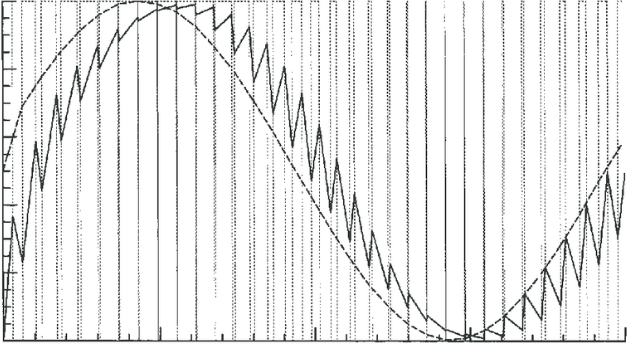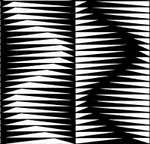Standing waves or room modes and nulls are nothing to do with the speaker and everything to do with the room. They are simply phase additions and cancellations that occur due to reflected waves within the room.
Unless your nick is PeterSt ... then suddenly other things are going on ...
haha
Anthony, it may be just before your times on this forum, but others may recall that this is even an explicit measure for me. And I mean :
explicit. So if (today) I notice even the slightest spur of standing wave (or dip) then it is by guarantee that I judge the whetever change to be wrong without further listening. And it is such an easy and comfortable means. Of course, one must first be in the stage of gotten rid of them (like Paul now, as it seems) - at least to some degree so you can have the reference.
Notice that the standing waves can occur in any frequency and they can be incurred for by any means which is detrimental to sound to begin with. Thus, "wrong" DAC and standing waves are your share; wrong filtering in-DAC (or by software) and it happens (ringing !), wrong ampifier - it happens (impedance !), wrong speakers (distortion) - it happens.
It is not so difficult to understand what happens if you only have some belief in the only one on the globe spouting such things (who is me), who comes up with a theory like this (theory, because a bit hard to measure) :
First you must envision sound waves in the 2D plane. Pick one direction the waves travel, like towards you. This of course with the notice that soundwaves travel in the 3D space but with 3D we can not envision a thing (too complicated). Thus, what I am saying is imaginable for 2D but for 3D it will work out just the same (OK, worse).
Say that a wave is put out jagged :
Thus, the intended shape is the dashed line, but from distortions the jagged line is the result.
Obviously it is so that any kind of distortion (source) can cause the original sine to be jagged (fed with noise).
On a side note : no nice sine ever exists in practice as all is mixed with 100s of different frequencies at any time, but do notice that each frequency originally always is a sine (and a nicely shaped sine if possible). This is how we can only
envision things from a theoretical base (and the theory is mine).
Now let's see what could happen in air (still 2D) when two jagged waveforms travel. Try to see that the speaker (one only) is at the bottom of this picture :
(courtesy of I can't read which stock photo site)
The intended waves you can see in the middle of what we call distortion escursions (the jaggies go to the sides in this picture).
Also try to envision that these are not the exact same frequencies and the left hand one goes a bit faster then the right hand one. They touch at the jagged ends ...
Now the sound buzzes.
Keep in mind that frequencies of course touch all over, but it is about what we add to it with our electronics (and also speaker mechanics). Thus, no matter a violin may show quite square waves (still comprising of sines because that is how a square is build up), it is not really the idea that we make it more sharp than original. But maybe compare with a bag pipe which intends to buzz and is therefore a very difficult instrument because any over-buzz (the distortion we add) and it screams in your ears with a main characteristic that it is uneven (the buzzing resonates (oscillates)).
So, the intended wave is the middle part you can see, without the jaggies. Easy to see how it has become way more difficult for the two waves to interact. When the jaggies wouldn't be there, there's just 4 times the space to move without touching.
The jaggies are my over-emphasis of something which normally wobbles a bit. Thus, on the intended wave a small wobble modulates. This is already caused by jitter. And, especially the lower frequencies suffer first. Why ? well, because any even longer term jitter can imply its own frequency into such a wobble which frequency lasts e.g. 1/20th of a second (50Hz) and the wobble could be 1/4th of that. Thus, the lower the jitter, the less this wobbling exhibits on the lower frequency and again the less the chance two 50Hz frequencies meet in space.
Two 50Hz frequencies ? Yes, if we count in the reflections ... (and what about left/right speaker, of course).
And now you see we are getting somewhere, because the room modes/nodes are about that in the first place (so Anthony, of course !). However, still the effect applies of two frequencies (or 100s of them) not being able to touch so easily when they are more lean. Thinner. Without distortion ...
Two waves will emphasize each other with a factor of two when they exactly meet. This is precise aiming when the wave is infinitely thin. Btw, notice that the imagining becomes quite hard now because we should be talking/thinking in the longitudinal direction where the waves exactly meet - say at the head of them. Still it applies, and the thicker that "rope" the easier the ends connect (and emphasize/add).
Important : in practice it does not work like this "connecting" at all, because it is about how the top (peak) and bottom side (dip) of two waves add (fall exactly over each other) or cancel (phase is 180 degrees different) and now you need to think a little bit 3D to see how waves may pass eachother when thin, because they must meet in the left/right plane at this small connection point.

(but it is on all directions because ... 3D)
So ... all theory only because in 3D all is 100 times more complex (and more crucial with that !) and nothing is to envision in 3D.
Fact is that once upon some time my room was stacked with PEQ's to get rid of standing waves which were everywhere. Today I indeed challenge people who listen in my room to find even one, no matter where and no matter the "yea, well,
that corner is obvious !". So no, nothing of the kind, no-where.
And this indeed is with unheard bass powers and loudness (I easily play over 100dBSPL and still nothing goes wrong in any position in the room).
Remember me talking about experimening with a new USB cable (which was deliberately wrong) ? Standing waves all over the place (low frequencies) and buzzing on top of it (high frequencies). Point here is (again) : I can try to be objectively listening to the sound and may fail in liking it, but the standing waves are the real judge and totally objective to begin with (because so easy to hear). And of course zero USB errors, but we know about that by now ...

Peter
I suppose you could promote some academic argument as you have just made, but regardless of the distortion in the direct or reflected waves they are going to meet and they are going to be different amplitudes at different parts of the room (modal behaviour) regardless of the amount of distortion in the original wave. Reflected waves are more distorted due to the physics of how reflection occurs and which frequencies are reflected by which materials and substrates.
If your room reverb time is 0.5s at a particular frequency or range of frequencies, which is a realistic number, the waves have traveled 170m or so off so many surfaces gradually reducing in strength until we no longer recognise them, and they bear little tonal resemblance to the original direct wave because they have bounced off so many surfaces. Yes, the direct waves have the most energy with a little less energy after the first reflection, and if the 3D waves have a cleaner wavefront with less surface area to "meet" (that is essentially your theory I think) they will still meet and they will still make the cancellation.
In the end, I don't really know, and thinking about a 3D pressure wave is doing my head in so I will leave it here. Your theory is duly noted but I would need more convincing (please don't feel you need to try!)
One thing about the Orelo's: if distortion was really the ultimate aim, why a tractrix horn? The lowest distortion horns are OSWG which is a conical derivative. The tractrix has uneven dispersion across its frequency range, with even dispersion being critical to retaining the tonal balance of reflected sounds. My system is all tractrix...they just sound better (the distortion perhaps?).





